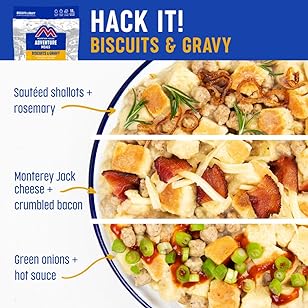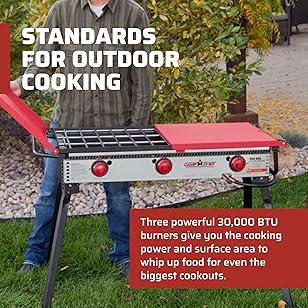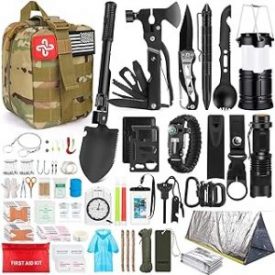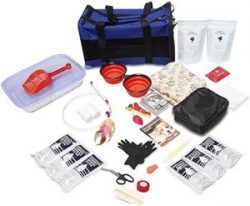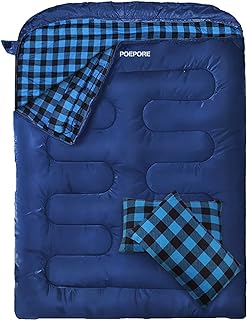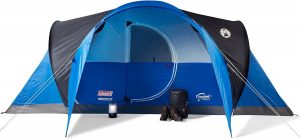Bug Out Survival Bag
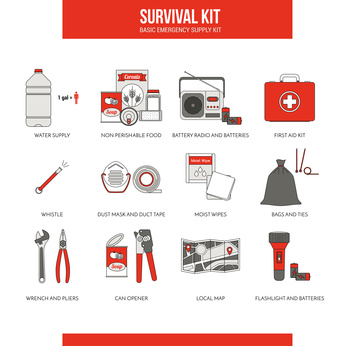 From the first sword hung by a bag of jerky to the sophisticated jet fighter ejection seat survival kit, the bug out bag has been there for people living in troubled times.
From the first sword hung by a bag of jerky to the sophisticated jet fighter ejection seat survival kit, the bug out bag has been there for people living in troubled times.
No matter who you are or where you live, it is always possible you may have to abandon everything to escape what’s coming your way and live on what you take with you.
Be prepared for emergencies specific to your area, plus what falls into the whatever can happen probably will category. The C.D.C. (Center for Disease Control) says to prepare for Zombies because if you are ready for Zombies, you are ready for anything.
Surviving in short term and long-term emergency situations will depend on how well prepared you are to meet the basic needs of yourself and your family. More than ever, many people are seeing the wisdom in having collected the essentials they need to survive packed and ready ahead of time.
This collection of essentials can take multiple forms such as backpack, duffel bag, gym bag, even a briefcase or attaché case (with a strap that will allow your hands to be free) will do for office camouflage of purpose. Be sure and select one sturdy enough to deflect a knife thrust and deliver a solid blow to an attacker.
Build your emergency packs for various locations you and your family may find yourselves besides home, such as auto or boat, private plane, camping or hiking or escaping into the desert, mountains or forest.
Survival essentials should include all of the basic needs such as food, water, shelter, protection and first aid. When you’re preparing for survival, you have to consider how long you may be stuck out there, think of both your long term as well as your short-term survival.
Be prepared to leave your home in seconds if the worst should happen. You need knowledge so that you can be prepared to effectively handle all of your survival needs, so here’s a look at some of the most important things you can prepare.
The Short Term: Why Do I Need a Bug Out Bag?
Sometimes, you can bug out (which means get out of Dodge or wherever you happen to be and get to a secluded spot) by making it to a vehicle and driving to your next family group agreed to meet up location.
But if you can’t, maybe because the roads are impassable due to weather or unsafe due to dangerous individuals that are roaming the roads, you need to have your condensed gear stowed in a bag that you can sling over your shoulder and go.
These bags are usually made of sturdy, waterproof canvas. A bug out bag is a bag filled with the basic gear that you’re going to need to have with you in order to make it for at least three days.
Some people also refer to these bags as their 72-hour bag. The items that go into this bug out bag are the things that you absolutely must have so you can carry on to your next step of survival.
This is also the bag that you need to grab in that moment when you have to leave and rendezvous at whatever arranged destination you’ve planned for yourself or your family. Remember, everyone may be coming from different locations, so if home is no longer an option alternative meeting places must be known to all.
You’ll want to keep this bag in a handy place where you can get to it quick and be out the door fast if necessary. Some serious individuals also keep multiple bug-out bags handy – one at home, one in the car, and one at work, so that they’re fully prepared no matter what. Backpacks for everyone means survival items are evenly distributed to all packs so the loss of one does not mean the loss of all water or all food, etc.
What Goes into the Bug Out Bag?
There are several things that need to be in your bag and all of them are important – but the top three will be water, food and shelter. The body can’t survive without having enough water to drink.
The last thing you want to end up doing is being afraid that you’re not going to have the water that you need. You have to have water inside your bag because in the event of some kind of catastrophe, there are no guarantees you’ll find immediate access to clean water.
Even if you live near a large body of water, carry purification tablets or filter straws, there’s no guarantee that you can get to that water if the roads are blocked off or it’s been compromised in some way. Since your survival depends on water, you must have some water for every person who’s going to be with you.
Figure your water supply requirements based on the formula of 1 liter x 1 person x days. Since a bug out bag is a 72-hour bag, your formula will figure in 3 days.
If you have 3 people in your family, you will take 9 liters of water or three gallons. This is only a temporary solution to your water needs. So, you’ll need to know ahead of time what you’re going to do at the end of the 72 hours and take purifiers to help cleanse natural water that you find on the go.
Food is something else you need in the bag. Remember that the bug out bag is a short-term solution only. The food items that you put in the bag will be simple foods that can last the 72 hours.
Short term foods are items such as granola bars or energy bars. You can buy energy bars that contain 2,400 calories per bar which would give each person the calories they needed to survive for each of the three days. Though for safer long-term storage of 72 hr emergency food you should consider the purchase of a brick of emergency bars for each individual in your party.
You’ll need to pack a temporary shelter in your bug out bag. This can consist of single person tents, multiple person tents or a tarp. You’ll also need a sleeping bag though sleeping bag liners will do in a pinch. Enough mylar plastic silver foil survival bags or blankets can also be a handy addition in case of cold weather.
Taking along a couple of complete sets for your clothing changes is also an essential need. Large 30–39-gallon lawn trash bags can be used as emergency clothing while your clothes dry, rain poncho or sleeping bag/tarp, etc. five have almost no weight what-so-ever. Some people also choose to take along rain ponchos. You should pack a pair of sturdy shoes or hiking boots if you plan to be out in nature the whole time.
What Other Gear Should I Consider?
There are certain items that you want with you because it can make survival a lot easier, and it helps remove some of the stress from the situation. Take things that will aid in your survival.
That means that you’ll need to make sure that you have small tools with you. Such tools would be a folding shovel, a survival knife, a small hatchet and a wire saw. Most of these items will transfer from the bug out bag to wearing them in their protective sheaths.
You’ll want to have tough string for tying together tree branches or for securing a tarp. In a pinch, you can use a sharp survival knife to cut through any wood – but it won’t do for thicker pieces, and it will take longer.
Taking a compass along is a necessity in case you have to navigate areas that you’re not familiar with. In case you want to start a fire, you’ll want to have matches, a cigarette lighter or fire starter materials.
Cotton balls are quick to help a fire going in a fast burn – making it easier to light the kindling. They’re so lightweight and compact that you can carry these in your bag without issue. Cotton balls soaked in wax or fire starter in a sealed package are good for wet conditions.
A small fishing kit of hooks line and sinkers can turn a branch into a fish market.
You’ll want to bring personal hygiene supplies along for toilet necessities. Remove the core of thousand sheet toilet paper and press it flat for storage. This is an area where a D handle folding shovel will come in handy and doubles as a makeshift defense weapon. You will want to dig holes for using the bathroom so as not to attract animals or trackers.
A first aid kit is a necessity and should contain the essentials that you’ll need in the event someone needs medical care. You should also make sure that you’re prepared with any medications in their respective prescription bottles in a zip lock bag, that you or family members need to take on a regular basis.
Contents of a quality First Aid Kit
A first aid kit contains a collection of medical supplies and other items for medical emergency. A homemade kit can contain various medical supplies obtained differently. Although pharmacies or stores offer first-aid kits, they may contain low-quality and lesser amounts of items for treating minor injuries at home.
A bug out bag kit can be customized. It could contain more than the required medical supplies. However, the number of items that can be found in homemade first aid kid may vary according to the experiences of owner and intended users.
A first aid kit can be optimized by users. It can be expanded with other useful items that can be used in treating wounds, bruises or injuries. Bandages and dressings are the common items that can be found in a first aid kit. Dressings should be sterile when they are used to protect wounds. Gauze roller bandages, adhesive bandages, triangular bandages and elastic bandages are types of items that can be applied to secure a dressing. Nevertheless, popular less-costly adhesive bandages with dressing such as Band-Aid could be integrated in a first aid kit.
Medications should also be included in a first aid kit. These medications may range from antibiotics or antiseptics to painkillers. Alcohol, povidone iodine, benzalkonium chloride and antibiotic ointment are antiseptic substances to be applied on wounds and cuts. Ointments and lotions used to relieve skin itchiness can also be put in a first aid kit. Painkillers and antihistamine drugs can be included in a kit to relieve various ailments. Medications to treat skin disorders and problems such as aloe vera gel, burn gel, and petroleum jelly can also be stored in a kit.
Some items can be added to a expanded first aid kit if it is used in outdoor activities. One can add items that are used to treat snakebites and motion sickness in a kit. Activated charcoal and syrup of ipecac are medications that can be used to treat poisons. They can be used as directed by poison control center and can be included in the kit.
Instruments and medical equipment can also be integrated in a first aid kit. Splint, personal protective equipment such as gloves and CPR mask, space blanket, thermometer, BP instrument, hand sanitizer, tweezers, irrigation syringe, rubber suction bulb and trauma shears, needles and sutures or dental floss without wax are items that can be put in a first aid kit along with a military or scout first aid manual in a waterproof bag.
Having a solar powered or crank radio is also a good idea. By having a way to listen to emergency broadcasts, you can keep on top of what’s going on in your area. Because you may be in the dark, you’ll want to also have solar rechargeable flashlights or long-life LED tactical flashlights with spare Duracell batteries so that you can see your way around obstacles and possible debris.
To be prepared for a situation where you may need to signal someone, you should have a mirror or other reflective device that can help you be located if there’s an emergency.
Of course, if cell phone service is available with GPS you will want to carry one or more phones and a crank charger.
What Kind of Protection Should I Take?
When society falls apart through any kind of disaster, people intent on stealing from and causing bodily harm to others seem to come out of the woodwork. Why be prepared if a bullet will do the job? These people won’t bat an eye at taking what you need to survive.
So, you need to be prepared to defend yourself and your family. Every essential survival situation depends on having the right kind of knife. Not only can these knives be used to cut twine, but they can also be used to help secure a tarp or can be used to help make a sling or a leg brace in the event someone breaks a bone.
You can use knives for fighting if you’re in a tumultuous situation, and they can be used to help skin and cut up meat from wild animals if you have to turn into a hunter during this time.
Remember that the blade of your knife matters. You want to get a knife that has a stainless-steel blade because stainless steel can handle inclement weather better than knives made of other elements.
Look for a knife that’s at least six inches in length. You might also want to find a knife that you’re comfortable carrying on a sheath on your belt. That way, it’s handy if you have to defend yourself.
You’ll also want to look at other weapons such as guns. Carrying a .357, 9mm, 45, can help you keep your family safe while you’re trying to survive, though even a .22 target pistol is better than nothing and you can carry a lot more ammo. You’ll also want a longer-range weapon such as a shotgun or rifle.
Very Long Term: Food Considerations
Your long-term survival needs to be something that’s on your mind right now. You can’t wait until something happens to wish you had been prepared. You won’t want to deal with the worry about being the one responsible for taking care of other family members and feeling helpless to do anything about it.
You have to begin planning to take care of your long-term food needs immediately. That means you need to plan ahead to feed your family if troubles go on for years. You can get a lot of prepared emergency foods that you can buy in bulk – but what are you going to do when that runs out? There might not be any place for you to get more.
Even having a few years’ supply of canned goods, you purchased or foods that you’ve canned yourself won’t help you long term because eventually that, too will run out.
You have to always have a way to restock. The best way to do that is by having seeds that you can plant. You can harvest your own seeds, but the downside of that is there won’t be a guarantee that the seeds will still be viable – especially if they get wet and mold sets in.
Buying the seeds that you need is always the best option. Some people that plan to be self-sufficient are already working on growing their own food supply. But if that food supply is flooded out or raided by others, you’ll need to have a way to grow it again.
This can mean planting food as if grown wild, not in neat obvious farming rows. You can have small crops in various more or less hidden locations.
You want to buy seeds that are known as heirloom seeds. These seeds are seeds that are guaranteed to still be usable longer than regular seeds. The reason for this is found in the way that the seeds are put in the containers.
You’ll usually find wording on these seed containers that state that the seeds have long viability dates. The seeds from these crops are expected to be viable unlike seed often sold in garden stores whose subsequent seeds will not grow. These seeds can be used to grow everything that you need to survive.
You can select the seeds a few at a time, choosing from vegetables and fruits or you can buy the seeds that offer you a variety of several vegetables and fruits all in one container.
Because you may not have access to a pharmacy or easy access to medicine, you might also want to look into buying what’s called medicinal seeds. These seeds grow into plants that ancient civilizations used to treat illnesses.
Once you have the seeds on hand, you’ll need to store them properly until you’re ready to use them. Keep your seeds away from temperatures that can cause damage to them. You’ll want to keep them away from light as well.
Aside from seeds, you can start storing bulk quantities of dry foods that you’ll want to eat, such as grains, rice and pasta. Have spices on hand to flavor foods, and make sure everything is stored in airtight containers that pests and moisture can’t get into.
The Long Term: Water Essentials
Obviously, the three-day supply of water in your bug out bag is a short-term solution and not a long term one. You won’t know right away how long you’re going to have to depend on finding your own water supply.
After a man-made or a natural disaster, water is often contaminated by objects, fuel and motor oils, animals both dead and alive and by dirt and bacteria. Drinking water that’s contaminated will make you extremely ill.
So, the first thing you need to make sure that you have is a way to purify any water that you need to drink. Boiling water is a fast and effective way to kill off the bad things in water that can make you ill.
But just in case you can’t heat water, you can use purification tablets. You can use tablets or concentrate that’s designed to last for five years or longer. That will give you all the time you need to put your other methods of collecting water to use.
You should begin now to use a rainwater system. For this water collection system, you’ll need to buy or make 55-gallon water barrels. These can be positioned below the eaves of your home to collect the water that runs off the roof of your house.
Until the water is needed for survival, you can use this to water crops or feed livestock on your property. But when the time comes that you need to use the water for survival, you can mount a siphon pump on the water barrel to siphon out the water.
There are emergency filter units that you can use that are designed to purify your water long term. For people who live in a place such as an apartment where using a rain barrel isn’t an option, the best bet for them for essential water preparation is to start storing tap water in 2-liter plastic soda bottles, rotating them out periodically with fresh containers.
Since water is absolutely vital to your survival, this is something that you can’t be without. Have a map of your area on hand and on that map, highlight all of the places near where you live that you can get water.
There may be streams, rivers or lakes nearby that you can use to tap into that water for your survival. Remember – you may not be able to get to it from a roadway, so having the map can help.
The Long Term: Shelter Essentials
If your home has become uninhabitable, you can survive for a while in a three-season tent or by using a tarp that’s positioned like a tent – but that’s not a long-term solution if the weather becomes too cold for tent living to be warm enough without an insulated tent and heat source.
You’ll need to construct a shelter using what you have on hand or what you can find in your environment. You construct a shelter by thatching grass together and tying it with cord.
You can also construct a shelter using tree limbs that you saw and strap together. But if you plan ahead, you can create a shelter now that you can go to if there is a disaster.
You can spend the time pre-emergency and create a shelter that would house you and your family. This shelter should be sturdy enough to be considered a regular home and should provide shelter from inclement weather as well as cold and heat.
These shelters can be constructed from wood or from metal such as through the use of old trucking containers. Some people choose to hire contractors to build underground bomb shelters.
While the thought of gathering all of the essentials that you need to survive can seem daunting, it’s always better to be prepared than to wish you had been – and weren’t. Knowing how you’ll survive if there’s a catastrophe is the first step toward making sure that you and your family succeed.
Short- and Long-Term Bug Out Gear
When packing for bug-out survival, something you have to anticipate is how long you plan on needing to be gone from your home for. If you’re only going to have to leave for a week, the supplies and gear that you need are going to be vastly different from having to evacuate for the foreseeable future.
It would be wise to have one bug-out bag for short term survival and one for long term. That way, you’re not carrying excessive unnecessary supplies for either one, but you can be prepared for both instances at the same time.
Generally speaking, short term bug-out bags should have more convenient but more disposable items, which will make your life easier but won’t last forever. The long-term bug-out bag should contain items that are going to last you for years to come and will enable you to survive for a longer period of time.
Short term bug out situations might be due to a weather event, like a wildfire threat, incoming hurricane, etc. It may also be causes by a temporary civil unrest situation. Long-term situations would be more severe – like societal collapse, a major environmental disaster, or war.
Choose the Right Supplies for Food Sources
In the short term, you should be able to keep a decent stock of food that can last you a week or so. Even if you just take 7 MREs (meals ready to eat) with you, that’ll be enough to keep you fed throughout that week, and you’ll have a hot meal as well.
The best part about MREs in particular is that they generally don’t even need water to be added to reconstitute them. You can add water to activate the ration heater, but that’s generally not necessary, and it makes the meal much better.
MREs and other ready-to-eat meals are great for short term survival. They taste decent and can be transported easily, but they aren’t ideal for long term survival because you can only carry so many of them.
For longer term bug-out survival, you want to bring gear with you that you can use to acquire more food from the wild. It’s fine to bring a couple of days’ worth of rations, but if you plan on bugging out for more than a week or so, you’re probably not going to be able to bring meals to have the entire time.
By bringing things like cookware, fishing supplies, and hunting gear, you’ll be able to consistently eat meals that you can find out in the wild. Theoretically, this could be done indefinitely, so you won’t have to worry too much about getting food.
This could be done for short-term survival as well, but it would be much more difficult and not really necessary. This is why it’s so important to split your gear into short- and long-term packs, because while all long-term survival gear will work for the short term, it’s very inconvenient to work with when it’s not needed.
Fire Starters Help Make Campsites and Allow You to Cook
Having a source of fire is imperative for any bug-out bag. Being able to start a campfire helps you get through cold nights, and the fire allows you to cook food and boil water if need be.
For a temporary bug-out bag, you might not need a fire starter nearly as badly, but you should still have some on hand just in case. In order to make things easy for yourself, a few packs of matches or a couple of lighters would work well.
These are very easy to find and are available in abundance, any they’re fairly compact and lightweight, so they should be able to fit into any pack. The only downside to matches and lighters is that they are disposable, and they’ll run out after a short time.
For a long-term bug-out bag, you’re going to want something that will hold up for a long time. The best option for a long-term fire starter is something like a Ferro rod, which can be used over and over again.
Ferro rods just need to be struck with a sharp object like a knife, and most have an attached striker that works particularly well. When struck, they produce very hot sparks, which can catch tinder and kindling on fire when they land on them.
Since you can reuse Ferro rods for a long time, they’re more ideal for long term bug-out survival. The only downside of them is that they’re more difficult to learn how to use, but once you have a feel for it, it’s not harder than using a regular lighter.
Have Access to Clean Water at All Times
Having clean water on hand is a must for any survival situation. Even for a weeklong bug-out, you might have difficulty carrying enough water to sustain yourself, as you would need at least 6-7 gallons of water.
That much weight would be overly encumbering to most, and the bulk of the gallons themselves would make it unrealistic to carry that amount unless you were travelling by car instead of on foot.
This means that you need to have a means of water purification on you at all times along with a sturdy water bottle that you can use to carry water. With these, you can get water from any source and ensure that it’s clean and safe to drink.
For short-term survival, purification tablets are a very simple to use and easy way to keep your water pure and safe to drink. All you need to do is ensure that there’s no debris in your water and place a tablet inside. The chemicals in the tablet will kill off most bacteria and harmful microbes, allowing you to drink the water safely.
If you plan on having to bug out for a long time, it may be worthwhile to invest in a few water filters. These are limited in their uses, but if you have a few of them, they can last you well over a year.
First Aid Is Important for Any Bug-Out Bag
If you’re trekking through the woods on foot, it’s not unlikely that you’ll get injured in one way or another along the way. While some of these injuries can be ignored such as minor scratches, anything more serious will require the use of a first aid kit to treat the wound to the best of your ability.
In a short-term survival situation, a basic first aid kit will likely be sufficient. You just want to be sure it has things like antiseptic ointments, bandages, sting relief, burn relief, and any other essentials you might need. These can be found online easily, and sometimes even in stores.
For long term survival, you may need something a bit more complex. One thing you should keep in your pack for drawn out bug-out survival is extra medication that you might need, especially if it’s a prescription you’re supposed to take.
You may also want to have more intensive care items on hand, such as splints and even tourniquets. If you really end up in a dangerous situation, these items can easily save your life.
Tools May Be Necessary to Repair and Build While Bugging Out
Something you should always have in a bug-out bag is a small variety of tools. Tools can come in handy both for their intended purpose as well as in unintended ways, and they can help you make repairs and build new things altogether.
For a short-term bug-out bag, you can easily get away with just packing a multi-tool. Any good multi-tool should have all of the essentials: a knife, pliers, screwdrivers, and a file. These tools alone will get you pretty far and can help with most situations.
These are so easy to carry that you could even just keep one in your pocket every day instead of putting it in the bag. If you need to, though, it won’t take up hardly any space at all in your bug-out bag.
You should consider bringing more complex tools along in your long-term bug-out bag, though. There’s a high probability that you’ll need more durable and more functional tools to do certain things, like easily building shelter.
A foldable hack saw, for example, would enable you to easily break down small trees for both firewood and shelter materials. While this would be possible to do by hand to an extent, it would take far more effort and a lot more time.
Bugging out for the short- or long-term scenarios requires a commonsense approach for what you can adequately carry in a bug out bag, combined with strategic thinking regarding which supplies will serve you best according to the time you’ll be gone.
By having similarly packed dual (so the loss of one isn’t a disaster) bug out bags ready to grab in an instant, you won’t have to worry about taking time to stop and swap out gear based on what kind of chaos is unfolding around you.
In Conclusion
The best defense in a disaster is not to be there. Those ready with camping equipment ready to go, who can drive to a safe place like your second home cabin in the woods, your family has a better chance versus those on the run with nothing prepared.
_


 January 17, 2016
January 17, 2016 
